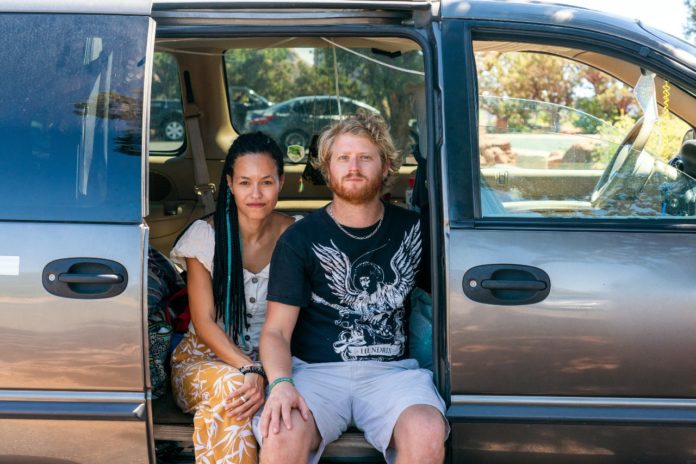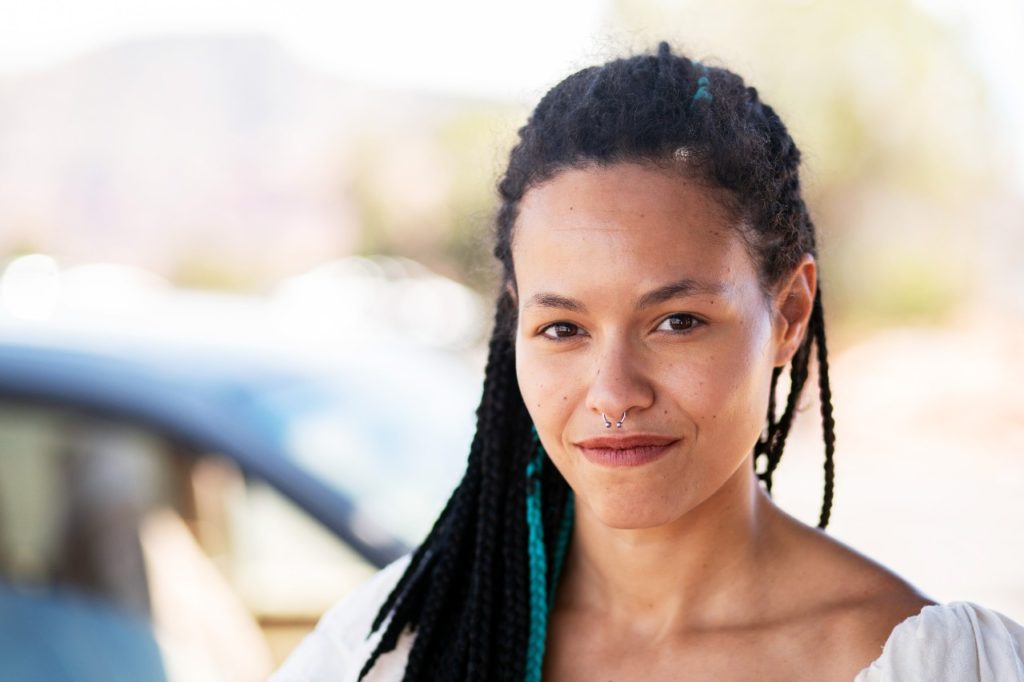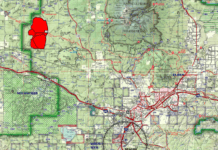
Many self-described “travelers” pass through Sedona for a season before moving on. They’re free spirits, living on the cheap out of vehicles or backpacks in parking lots, or on Coconino National Forest when Sedona police, enforcing the city’s no camping ordinance, shoo them out of town.
But not everybody out in the desert is a traveler.
Sedona’s open secret is that some of its workers are among those living out of vehicles on public lands or clandestinely parking inside city limits, delivering food and giving massages by day, heading to camp by night. Invested in the community, they want stable, full-time housing, but find it out of reach in the Verde Valley.
For these workers, the recent heat waves, smoke and forest closures have compounded an already bad situation.
Last week’s total closure of the local national forests led to panic as car campers wondered where they could go. Many headed inside city limits, hoping city officials and police would be lenient on the camping rules during the forest closure. Sedona has not given any official assurances to homeless people displaced by forest closures, but campers in certain locations in the city have so far been left alone.
Jen Wade, an ethics professor from Philadelphia who has been living out of her Toyota sedan since February — “to be in solidarity” with the people she writes about — happened to be in Sedona when the forests were evacuated last week.
She said many people experienced a “terrifying night” when personnel began clearing the forest. Wade said she slept poorly as she breathed smoky air and worried she might be roused at any moment inside Sedona city limits.
Former Sedona City Council write-in candidate Ed Larrieu circulated among Sedona’s homeless and shared a non-committal email from Sedona City Councilwoman Kathy Kinsella that alluded to police exercising discretion — but no promises. Wade said Larrieu’s information nonetheless reassured a lot of people displaced by the closure.
“People are feeling disheartened and sad because they don’t know how long this will last,” Wade said.
Asked last week if the city would allow people displaced by forest closures to camp in the city, Lauren Browne, communications manager for Sedona, said the city was working on a solution, but wouldn’t comment directly on emergency camping in Sedona.
“We are in talks with the city of Cottonwood to see if there is location that is suitable for campers and are also coordinating with the [Sedona Area Homeless Alliance] to gather information on social services and resources for referrals. Additionally, the police department will help inform those in need about the services in Coconino County and Flagstaff for those experiencing homelessness,” Browne wrote.
A Bad Situation Made Worse
Hadassah Kain is a worker who has been affected by the forest closure. Currently working as a food delivery driver in Sedona, Kain is between housing situations and is temporarily living out of her van, parking inside city limits while the forests are closed.
Kain came to Sedona after she become estranged from her adoptive parents in Gatlinberg, Tenn., where she had lived all her life. Since arriving in Sedona, Kain estimates she has lived in 10 different places.
Jobs are available in Sedona, “but housing has been really difficult,” she said. “I’ve been literally renting various apartments, staying with friends, camping,” she said.

Rooms for rent that she hoped would be long-term often didn’t work out, Kain said, because of strict and eccentric landlords. She’s experienced rentals that didn’t allow guests or prohibited meat and alcohol in the house. In one house, Kain said all of the renters had to leave at the end of their leases because the landlord didn’t like the tenants’ “energy.”
When all other options have failed, Kain said, she’s done two to three month stints camping in the forest. When she’s living out of her car, she uses her gym membership to shower.
Kain said there are benefits to camping in the desert. “I can really think. I can really meditate” while in the forest, she said. “I’ve seen a lot of interesting creatures.”
But, “I also have decided that it’s kind of hot out there.”
A good place to go to escape the heat is the library, which she enjoys in part because she likes talking to children, many of whom are not shy about striking up conversations.
When the wildfires started draining resources and the forests closed, Kain said she thought about just leaving Sedona, but she has many friends in town. Many of the people struggling to get by in Sedona belong to a tightknit community.
“Maybe some of these people need my help,” Kain said.
Her concern for the community is one of the reasons Kain was willingly to speak candidly about her experience. She wants to get the word out that a lot of people just want a place to go, even if that’s just a place to park a car. They don’t want to worry about a knock on the door at 3 a.m.
Both Kain and Wade described the feeling of terror being awakened by knocks on their vehicle windows while camping. “I woke up and my heart was pounding,” Kain said.
“We just want to feel safe, have peace, not be harassed by the police,” she said. “I don’t want to be stopped just because of my living situation.”




















